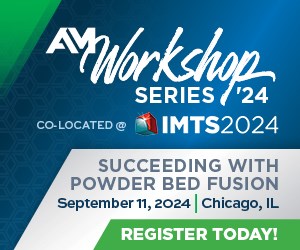Chromatic’s Smooth-Mode Technology for 3D Printing Durable Rubber Parts
The new technology is well suited for manufacturing rubber bladders and other elastomeric products that expand and contract.
Share
Read Next
Chromatic 3D Materials says it has developed a breakthrough Smooth-Mode technology for 3D printing durable rubber parts with ultrasmooth surfaces at commercial volumes. Now, industrial manufacturers can 3D print smooth, high-quality polyurethane parts — such as seals, gaskets, grommets, bladders and other elastomeric products — without the need for postprocessing or surface finishing, the company says.
It is said sealing requires a smooth surface, but 3D printed parts have always had layer lines or roughness. The company says it has developed a way to easily and cost-effectively 3D print products that are ultrasmooth without additional steps. The company says it’s a breakthrough for 3D printing those professional applications that must be airtight and watertight.
Parts printed with Smooth-Mode technology are said to have superior aesthetics as well as finer dimensional accuracy. For example, products can be printed with precise uniform thickness at submillimeter scale. Thus, the new technology is suitable for the production of rubber bladders and other elastomeric products that expand and contract.
Chromatic’s team of additive manufacturing experts first achieved ultrasmooth prints by fine-tuning the viscosity and surface tension of the company’s printable thermoset polyurethane materials. Then, they developed a way to go beyond simply applying the reaction technology to fused deposition modeling (FDM) printing. Smooth-Mode uses chemistry to create an ultrabonded and smooth part. The company says it believes this printing technique delivers the world’s smoothest printing along the Z or height axis.
Industrial manufacturers can take advantage of Smooth-Mode with Chromatic’s reactive extrusion additive manufacturing (RX-AM) materials and technology platform. A 3-in-1 platform, RX-AM includes materials, software and hardware for deposition printing with reactive chemistry. It uses printable polyurethanes with Shore A hardness ranging from 50 to 90 as well as custom grades with varying colors, hardnesses and special properties (for example, antibacterial, static discharge, biocides and more). The platform is designed for printing commercial volumes.
Related Content
-
How to Build 10,000+ Shot Molds in Hours
Rapid tooling isn’t so rapid when it takes days to 3D print a metal mold, and then you still must machine it to reach the necessary tolerances. With Nexa3D’s polymer process you can print a mold in hours that is prototype or production ready and can last for more than 10,000 shots.
-
Multimaterial 3D Printing Enables Solid State Batteries
By combining different 3D printing processes and materials in a single layer, Sakuu’s Kavian platform can produce batteries for electric vehicles and other applications with twice the energy density and greater safety than traditional lithium-ion solutions.
-
Understanding HP's Metal Jet: Beyond Part Geometry, Now It's About Modularity, Automation and Scale
Since introducing its metal binder jetting platform at IMTS in 2018, HP has made significant strides to commercialize the technology as a serial production solution. We got an early preview of the just-announced Metal Jet S100.








.png;maxWidth=300;quality=90)





